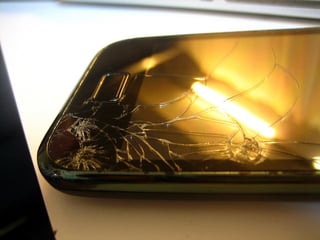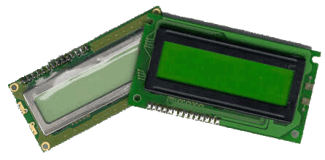Any portable or handheld device will be inevitably dropped. Humans do that. Because LCD displays are made of thin glass and glass can break, we face some design challenges. While making your display entirely unbreakable isn't possible, optimizing drop-test performance with a system level approach will help products pass display drop-testing and make your end product far more durable.
 The design challenge isn't about making the display stronger. That's not enough. It’s about the product and display being designed together. The analogy is designing around a fragile egg. Your end product must protect that egg.
The design challenge isn't about making the display stronger. That's not enough. It’s about the product and display being designed together. The analogy is designing around a fragile egg. Your end product must protect that egg.
The design philosophy is somewhat similar to what's been long known in automotive design. A dropped product is crashing onto a surface, causing the product to experience sudden deceleration. This exerts high forces to the product and its integrated LCD panel during this sudden impact.
Key Strategies for Designing Displays
First, attempt to minimize deceleration effects from the drop. This is accomplished by designing the display to absorb crash energy. As with vehicles, designing for crashworthiness means applying types of material that will compress to absorb shock. While cars are designed with crumple zones to protect the passengers rather than the car, hand held products can use energy absorbing materials to protect the LCD, so that the end product isn't permanently deformed.
Effective approaches absorb and distribute the energy that occurs when a dropped device makes contact with a surface. While not always possible, hand-held devices employ a pliable material acting as a cushion between the product's “body” and the surface to absorb some of the energy in a drop.
The next step is to minimize and distribute the energy transferred between the product's exterior form and the display itself. The display acts just like a human in a car crash, the damage to the display is often caused by the display crashing into the internal features of the end product. Again, just like a human in a car, the display should be secured so there is not significant movement within the device during a drop (seatbelts), and to distribute the energy slower by using a pliable gasket material (airbag). This approach significantly improves the amount of energy the display will withstand in a drop test.
Next; work to eliminate all stress concentration points into the LCD glass panel. This means surfaces or places that come in contact with the LCD glass should be maximized. Concentrated contact points with the glass should be eliminated and spread out as widely as possible. Glass is quite able to withstand a degree of shock when it's broadly supported. Think about how glaziers transport huge sheets of glass on their trucks. An entire glass edge is vertically supported.
Additionally, the end product's structure shouldn't compress into the display in any way during a drop. There should be a clear  energy path around the display and not through the display itself.
energy path around the display and not through the display itself.
Finally, design support around any cantilevered LCD glass ledges. Chip-on-glass (COG) displays typically have much larger exposed ledges for the LCD integrated circuit (IC). In a drop, the forces on the unsupported, cantilevered ledge could easily cause breakage in the single-ply region. A remedy is using additional gasket or room temperature vulcanization silicone (RTV) material. This may be required by the LCD supplier in those vulnerable areas.
Lastly, hardened glass, such as Gorilla Glass can certainly help with day-to-day touch panel abuse, but not as much when being dropped. Definitely consider it if your end product will likely experience a rough life, as often found in industrial, construction or consumer environments.
Conclusion
Drop test results can be a bit unpredictable. This is especially true since the process must be repeated for all six axes of a product and at varying drop heights and on to varying surfaces.
Following these recommendations will help minimize drop testing damage, improve product durability and ultimately result in fewer failures in the tough, real world where your product needs to survive.

Find out how easy we could integrate with your organization as your new display supplier. Contact us.
Image by Iwan Gabovich via Flickr






